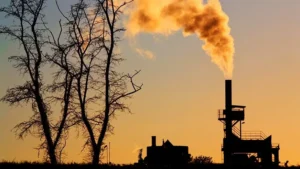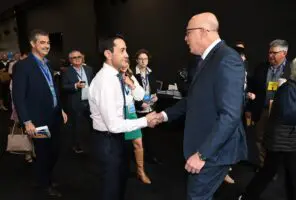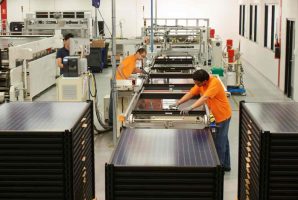As he turns the first sod on a massive new wind farm, Andrew Forrest has backed the development of a gas facility to help Australia transition from fossil fuel.
An Australian mining magnate intent on being a leading renewable energy baron says importing gas remains necessary to the nation’s transition from fossil fuels.
As he aired his contempt for the fossil fuel industry at the site of a major new wind farm on Thursday, Andrew Forrest defended his development of a gas and hydrogen terminal south of Sydney.
The Port Kembla Energy Terminal, due for completion in 2025-26, will be capable of supplying more than 70 per cent of NSW’s gas needs before turning to importing and exporting green hydrogen.
The facility would use “a little bit of the best” of fossil fuel to temporarily firm the changing power grid, Dr Forrest said.
“If you think you can go from a filthy to a totally clean operating environment for energy through flicking a switch, clearly you’re not an industrialist,” he said.
Related: “If they don’t believe the science, they can fuck off:” Forrest backs coal and gas ban
Related: No place for gas, as Forrest says green hydrogen orders “come from everywhere”
It was clearly in the interests of the country’s children, its environment, and the planet to ditch fossil fuels as soon as possible, Dr Forest said from the green fields of the future Uungula Wind Farm in western NSW.
“I wouldn’t want to be a sheep or a cow if this was going to become a great big coal mine,” he said.
“I wouldn’t want to be a farmer’s child if this was going to be a nuclear reactor (and) oil and gas facilities take no prisoners … they just destroy everything.”
The 414-megawatt Uungula will be built along the rolling hills of six cattle and sheep farms east of Dubbo as part of a lucrative, drought-proofing partnership with landholders.
About 250 jobs will be supported during construction with another 12 positions ongoing.
The project is part of a 14-gigawatt pipeline of renewable energy projects Dr Forrest’s Squadron Energy wants operating or financed by 2030.
That could have the company powering a quarter of the national electricity grid.
Federal Energy Minister Chris Bowen welcomed Squadron’s “ambitious” plans capitalising on Australia’s huge renewable energy potential.
But he called on states to be more efficient in approving renewable energy projects.
“It’s important to get to yes or no as quickly as possible,” he said from Uungula.
“If it’s yes, that’s great. If it’s no, at least those receiving the no can move on to another project.”
Developing wind farms entirely onshore also remains difficult.
Amid surging global demand, Squadron Energy on Thursday revealed a $2.75 billion strategic alliance for wind turbine supply with General Electric subsidiary GE Vernova.
It was not yet feasible to build turbines domestically as substantial overseas subsidies drove down the cost, Dr Forrest said.
About $1 billion in turbine infrastructure will go to Uungula Wind Farm, while the rest will supply two projects in NSW.
The Albanese government is targeting 82 per cent renewable energy in the national electricity grid by 2030.
The grid, which does not include Western Australia or the Northern Territory, has run on about 38 per cent renewables in the past year.
A third of that was wind power.
Source: AAP
AAP travelled to Uungula Wind Farm as a guest of Tattarang and Squadron Energy.










